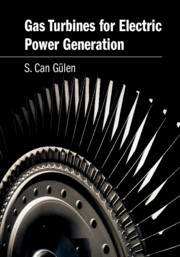Refine search
Actions for selected content:
2076 results in Aerospace engineering
Preface
-
- Book:
- Energy Deposition for High-Speed Flow Control
- Published online:
- 08 February 2019
- Print publication:
- 21 February 2019, pp xi-xii
-
- Chapter
- Export citation
Dedication
-
- Book:
- Energy Deposition for High-Speed Flow Control
- Published online:
- 08 February 2019
- Print publication:
- 21 February 2019, pp v-vi
-
- Chapter
- Export citation
Subject Index
-
- Book:
- Energy Deposition for High-Speed Flow Control
- Published online:
- 08 February 2019
- Print publication:
- 21 February 2019, pp 449-450
-
- Chapter
- Export citation
Notes
-
- Book:
- Energy Deposition for High-Speed Flow Control
- Published online:
- 08 February 2019
- Print publication:
- 21 February 2019, pp 372-421
-
- Chapter
- Export citation
Appendix A - Vector Analysis
-
- Book:
- Energy Deposition for High-Speed Flow Control
- Published online:
- 08 February 2019
- Print publication:
- 21 February 2019, pp 337-338
-
- Chapter
- Export citation
4 - Dynamics and Kinetics of Charged Particles
-
- Book:
- Energy Deposition for High-Speed Flow Control
- Published online:
- 08 February 2019
- Print publication:
- 21 February 2019, pp 67-85
-
- Chapter
- Export citation
6 - Microwave Discharge
-
- Book:
- Energy Deposition for High-Speed Flow Control
- Published online:
- 08 February 2019
- Print publication:
- 21 February 2019, pp 133-198
-
- Chapter
- Export citation
Frontmatter
-
- Book:
- Energy Deposition for High-Speed Flow Control
- Published online:
- 08 February 2019
- Print publication:
- 21 February 2019, pp i-iv
-
- Chapter
- Export citation
8 - Modeling Energy Deposition as an Ideal Gas
-
- Book:
- Energy Deposition for High-Speed Flow Control
- Published online:
- 08 February 2019
- Print publication:
- 21 February 2019, pp 243-272
-
- Chapter
- Export citation
5 - DC Discharge
-
- Book:
- Energy Deposition for High-Speed Flow Control
- Published online:
- 08 February 2019
- Print publication:
- 21 February 2019, pp 86-132
-
- Chapter
- Export citation
Author Index
-
- Book:
- Energy Deposition for High-Speed Flow Control
- Published online:
- 08 February 2019
- Print publication:
- 21 February 2019, pp 445-448
-
- Chapter
- Export citation
Appendix E - Bessel’s Equation
-
- Book:
- Energy Deposition for High-Speed Flow Control
- Published online:
- 08 February 2019
- Print publication:
- 21 February 2019, pp 369-371
-
- Chapter
- Export citation
Appendix D - Microwave Waveguides and Components
-
- Book:
- Energy Deposition for High-Speed Flow Control
- Published online:
- 08 February 2019
- Print publication:
- 21 February 2019, pp 342-368
-
- Chapter
- Export citation
References
-
- Book:
- Energy Deposition for High-Speed Flow Control
- Published online:
- 08 February 2019
- Print publication:
- 21 February 2019, pp 422-444
-
- Chapter
- Export citation

Gas Turbines for Electric Power Generation
-
- Published online:
- 15 February 2019
- Print publication:
- 14 February 2019
Reviews
-
- Book:
- Gas Turbines for Electric Power Generation
- Published online:
- 15 February 2019
- Print publication:
- 14 February 2019, pp i-ii
-
- Chapter
- Export citation
23 - Aeroderivative Gas Turbine
- from Part IV - Special Topics
-
- Book:
- Gas Turbines for Electric Power Generation
- Published online:
- 15 February 2019
- Print publication:
- 14 February 2019, pp 665-686
-
- Chapter
- Export citation
20 - Economics
- from Part III - Extras
-
- Book:
- Gas Turbines for Electric Power Generation
- Published online:
- 15 February 2019
- Print publication:
- 14 February 2019, pp 593-625
-
- Chapter
- Export citation
4 - Past and Present
- from Part I - Prerequisites
-
- Book:
- Gas Turbines for Electric Power Generation
- Published online:
- 15 February 2019
- Print publication:
- 14 February 2019, pp 39-72
-
- Chapter
- Export citation
22 - Closed-Cycle Gas Turbine
- from Part IV - Special Topics
-
- Book:
- Gas Turbines for Electric Power Generation
- Published online:
- 15 February 2019
- Print publication:
- 14 February 2019, pp 653-664
-
- Chapter
- Export citation
